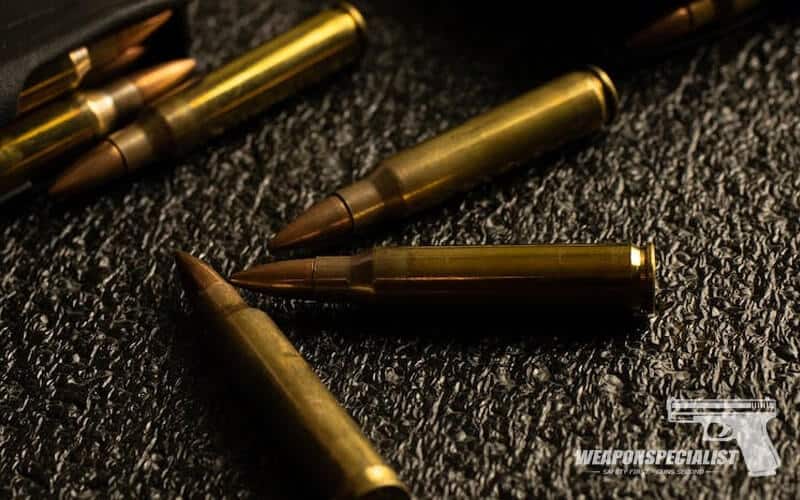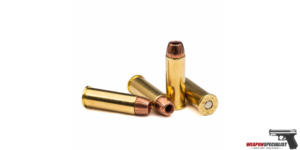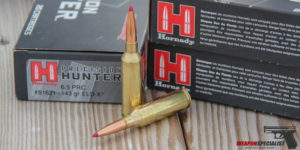The 6.8 SPC and .308 Winchester are two popular rifle cartridges with their own unique features and advantages. The 6.8 SPC, also known as the 6.8mm Remington SPC, is an intermediate rifle round designed to outperform the 5.56. It was developed in response to the U.S. military’s need for a more effective cartridge for close-quarters combat.
The .308 Winchester, on the other hand, is a powerful and versatile cartridge that has been used for hunting, target shooting, and military applications for over 60 years. It is known for its accuracy and long-range capabilities, making it a popular choice among hunters and snipers.
When it comes to 6.8 SPC vs .308, there are several factors to consider, including ballistics, accuracy, recoil, and cost. While the .308 Winchester is a proven cartridge with a long history of success, the 6.8 SPC offers several advantages, especially in close-quarters combat situations.
What is 6.8 SPC Ammo?
6.8mm SPC, short of Remington Special Purpose Cartridge, (6.8 SPC, 6.8 SPC II or 6.8×43mm) is a rimless bottlenecked intermediate rifle cartridge that was developed by Remington Arms in collaboration with members of the U.S. Army Marksmanship Unit and United States Special Operations Command to possibly replace the 5.56 NATO cartridge in short barreled rifles (SBR) and carbines.
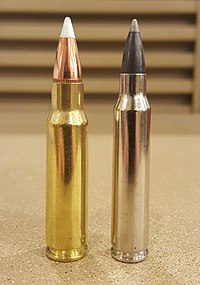
It is based on the .30 Remington cartridge, and is midway between the 5.56×45mm NATO and 7.62×51mm NATO in bore diameter. It uses the same diameter bullet (usually not the same mass) as the .270 Winchester hunting cartridge.
The 6.8 SPC was designed to offer superior downrange lethality over the 5.56 NATO/.223 Remington in an M16-pattern service rifle with minimal loss of magazine capacity and a negligible increase in recoil.
It is now a popular cartridge for hunting medium-sized game such as deer and hogs, as well as for competition shooting.
Specifications
| Characteristic | Value |
|---|---|
| Caliber | 6.8mm (.270 inches) |
| Case type | Rimless bottlenecked |
| Case length | 43mm (1.69 inches) |
| Overall length | 73mm (2.87 inches) |
| Typical bullet weight | 110-125 grains |
| Muzzle velocity | 2,500-2,700 feet per second |
| Muzzle energy | 1,700-2,000 foot-pounds |
What is .308 Win Ammo?
.308 Winchester ammo is a rimless bottlenecked rifle cartridge that is popular for hunting, target shooting, and military use. It was introduced in 1952, and is the commercial version of the 7.62x51mm NATO cartridge.
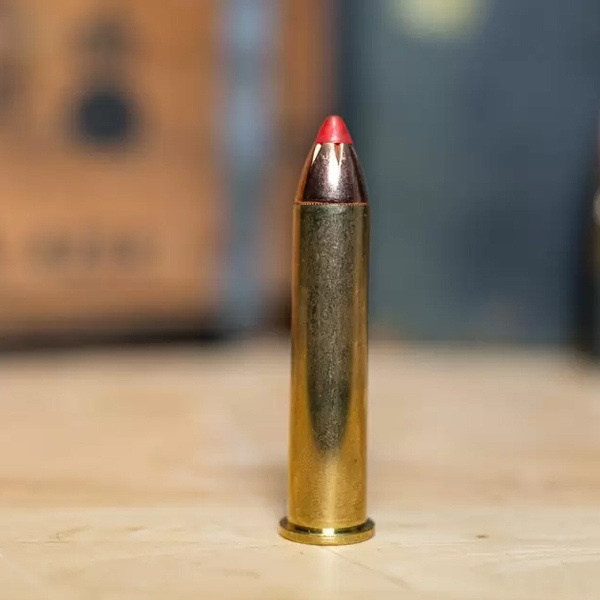
.308 Win ammo is available in a variety of bullet weights and types, making it suitable for a wide range of applications. For hunting, popular bullet weights include 150, 165, and 180 grains. For target shooting, match grade ammo is available with bullet weights from 168 to 190 grains.
.308 Win ammo is a powerful and versatile cartridge that is well-suited for a variety of purposes. It is a good choice for hunters who want a cartridge that can take down medium to large game, and it is also a popular choice for target shooters and competitive shooters.
Specifications
| Characteristic | Value |
|---|---|
| Caliber | .308 inches (7.62mm) |
| Case type | Rimless bottlenecked |
| Bullet diameter | .308 inches (7.62mm) |
| Case length | 2.015 inches (51.2mm) |
| Overall length | 2.800 inches (71.1mm) |
| Primer type | Large rifle |
| Typical bullet weight | 150-180 grains |
| Muzzle velocity | 2,600-2,800 feet per second |
| Muzzle energy | 2,500-3,000 foot-pounds |
6.8 SPC vs .308 Winchester Comparison Table
| Parameter | 6.8 SPC | .308 Winchester |
|---|---|---|
| Bullet Diameter | 0.277 inches (7.04mm) | 0.308 inches (7.82mm) |
| Case Length | 1.68 inches (42.67mm) | 2.015 inches (51.18mm) |
| Overall Length | 2.26 inches (57.4mm) | 2.8 inches (71.12mm) |
| Typical Bullet Weight | 90-140 grains | 150-180 grains |
| Muzzle Velocity | Varies depending on load | Varies depending on load |
| Recoil | Moderate-low | Moderate-high |
| Magazine Capacity (Typical) | 25 rounds | 20 rounds (AR-10 platform) |
| Effective Range | Up to 600 yards | Beyond 800 yards |
| Ammunition Cost | Moderate to high | Moderate |
| Ammunition Availability | Less common | Widely available |
| Platform Compatibility | Requires specialized rifles | Compatible with various platforms |
| Primary Use Cases | Medium-range engagements, self-defense, lightweight rifles | Long-range shooting, hunting large game, military applications |
The Similarities Between 6.8 SPC vs .308 Winchester
Centerfire Cartridges: Both the 6.8 SPC and .308 Winchester are centerfire cartridges, which means the primer is located in the center of the cartridge base. This design is common for rifle cartridges and provides reliable ignition.
Rifle Use: Both cartridges are primarily designed for use in rifles. They are not typically used in handguns or other firearm types.
Reloadability: Reloaders can reload both 6.8 SPC and .308 Winchester cartridges, provided they have the necessary equipment and components. Reloadability allows shooters to customize their ammunition for specific needs.
Variety of Bullet Types: Both cartridges offer a wide variety of bullet types, including full metal jacket (FMJ), soft-point (SP), hollow point (HP), and ballistic tip, among others. This versatility allows shooters to tailor their ammunition for different purposes such as target shooting, hunting, or self-defense.
Military and Law Enforcement Use: While the .308 Winchester has a longer history of military and law enforcement use, the 6.8 SPC has seen some adoption in these sectors as well. Both cartridges have been used in various military and police applications.
Multiple Rifle Platforms: Rifles chambered in both 6.8 SPC and .308 Winchester are available in various configurations, including bolt-action, semi-automatic, and even some designated marksman rifles (DMRs). This provides shooters with a range of platform options to choose from.
Effective for Hunting: Both cartridges are suitable for hunting a variety of game, with the .308 Winchester being particularly well-regarded for larger game due to its superior energy and penetration.
Reloadable Brass: The brass cases for both cartridges are typically reloadable multiple times, making them cost-effective choices for shooters who reload their ammunition.
The Differences Between 6.8 SPC vs .308 Winchester
Ballistic Performance
6.8 SPC: The 6.8 SPC is a smaller caliber cartridge, generally known for its flatter trajectory and better long-range performance compared to many other intermediate cartridges.
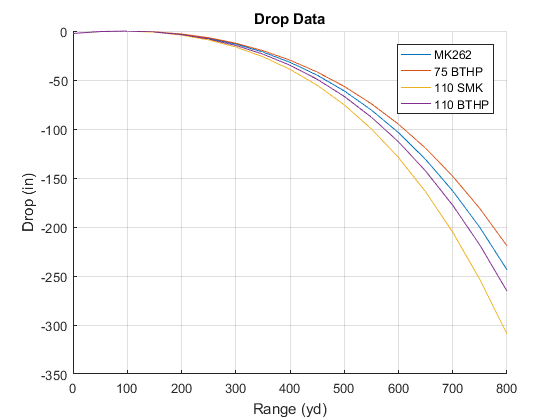
.308 Winchester: The .308 Winchester is a larger and more powerful cartridge, offering better energy and penetration, especially at longer distances.
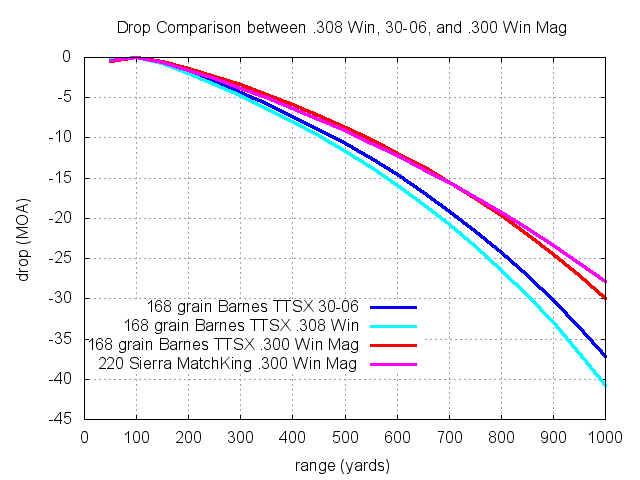
🏆 Winner: .308 Winchester wins in terms of raw ballistic performance, but 6.8 SPC is more versatile for medium-range engagements.
Recoil
- 6.8 SPC: Generally has less recoil compared to the .308 Winchester, making it more manageable for some shooters.
- .308 Winchester: Has significant recoil, which can affect accuracy and comfort during extended shooting sessions.
🏆 Winner: 6.8 SPC is the winner in terms of recoil management.
Ammunition Availability and Cost
- 6.8 SPC: Ammunition for 6.8 SPC can be less common and more expensive compared to widely available .308 Winchester.
- .308 Winchester: Ammunition is widely available in various configurations and is typically more affordable.
🏆 Winner: .308 Winchester is more readily available and cost-effective.
Magazine Capacity
- 6.8 SPC: Due to its smaller size, the 6.8 SPC can typically be chambered in rifles with larger magazine capacities.
- .308 Winchester: Typically has a lower magazine capacity due to the larger cartridge size.
🏆 Winner: 6.8 SPC has an advantage in magazine capacity.
Effective Range
- 6.8 SPC: Effective for medium-range engagements, typically up to around 600 yards.
- .308 Winchester: Effective at longer ranges, often extending beyond 800 yards.
🏆 Winner: .308 Winchester excels in long-range applications.
Terminal Ballistics
- 6.8 SPC: Offers good terminal ballistics for medium-sized game and self-defense scenarios.
- .308 Winchester: Has excellent terminal ballistics, making it a popular choice for hunting larger game.
🏆 Winner: .308 Winchester has superior terminal ballistics for hunting.
Platform Compatibility
- 6.8 SPC: Requires a specialized rifle platform, limiting the options available.
- .308 Winchester: Can be chambered in a wide variety of rifle platforms, including bolt-action and semi-automatic rifles.
🏆 Winner: .308 Winchester offers more platform compatibility.
Use Cases
- 6.8 SPC: Suitable for shorter to medium-range engagements, self-defense, and lightweight rifles.
- .308 Winchester: Ideal for longer-range shooting, hunting large game, and military applications.
🏆 Winner: Depends on the specific use case; .308 Winchester for long-range and hunting, 6.8 SPC for medium-range and self-defense.
Applications of 6.8 SPC and .308 Winchester
Hunting
The 6.8 SPC and .308 Win are both popular cartridges for hunting. The 6.8 SPC is known for its accuracy and stopping power, making it a great choice for hunting small to medium game. It is also lighter and more compact than the .308, making it easier to carry on long hunts.
The .308, on the other hand, is a heavier cartridge with a longer effective range, making it a better choice for hunting larger game at longer distances.
Military and Law Enforcement
Both the 6.8 SPC and .308 Win have been used by military and law enforcement agencies. The 6.8 SPC is often used in special operations where a compact and lightweight weapon is needed, such as in urban environments. The .308 is a heavier cartridge with a longer range, making it a better choice for long-range engagements.
Sport Shooting
The 6.8 SPC and .308 Win are also popular cartridges for sport shooting. The 6.8 SPC is often used in 3-gun competitions due to its accuracy and low recoil. The .308 is a popular choice for long-range shooting competitions due to its long effective range and heavy bullet weight.
In conclusion, both the 6.8 SPC and .308 Win have their applications in hunting, military and law enforcement, and sport shooting. The choice between the two largely depends on the specific needs of the user, such as the type of game being hunted or the distance of engagement.
FAQs about 6.8 SPC and .308 Winchester
1. What is the primary purpose of the 6.8 SPC and .308 Winchester cartridges?
The primary purpose of the 6.8 SPC is to provide a cartridge that balances moderate recoil with improved ballistics for medium-range engagements, making it suitable for self-defense and certain hunting scenarios. The .308 Winchester is primarily designed for long-range shooting and hunting larger game.
2. Which one has more recoil, the 6.8 SPC or .308 Winchester?
The .308 Winchester generally has more recoil than the 6.8 SPC due to its larger powder charge and heavier bullets. The 6.8 SPC is known for its relatively mild recoil, making it more manageable for some shooters.
3. Can I use the same rifle for both 6.8 SPC and .308 Winchester?
No, you cannot use the same rifle for both cartridges without significant modifications. The two cartridges have different case lengths and dimensions, requiring rifles chambered specifically for each cartridge.
4. Can I reload both 6.8 SPC and .308 Winchester cartridges?
Yes, both cartridges are reloadable. Reloaders can reuse the brass cases and customize their ammunition for specific purposes by adjusting bullet type, powder charge, and overall length.
5. Can I use the 6.8 SPC or .308 Winchester for self-defense?
Both cartridges can be used for self-defense, but the choice depends on your specific needs. The 6.8 SPC, with its lower recoil, may be more controllable in rapid-fire situations. The .308 Winchester, with its larger bullets, offers excellent stopping power but may have more recoil.
6. Are there specific advantages to using the 6.8 SPC in an AR-15 platform?
Yes, one advantage of using the 6.8 SPC in an AR-15 platform is that it provides increased firepower compared to standard 5.56mm NATO cartridges while still using the same lower receiver. This allows shooters to upgrade to 6.8 SPC without purchasing a completely new rifle.
7. Are there specialized loads for long-range shooting available for the 6.8 SPC?
While the 6.8 SPC is not typically considered a long-range cartridge, some specialized loads with high ballistic coefficients (BC) may be suitable for longer-range shooting, but they are not as common as .308 Winchester long-range loads.
8. Are there any notable military rifles chambered in 6.8 SPC or .308 Winchester?
Yes, several military rifles have been chambered in both cartridges. For example, the M110, a semi-automatic designated marksman rifle, is chambered in .308 Winchester. The 6.8 SPC has been used in some specialized roles and rifles, but it has not seen as widespread military adoption as the .308 Winchester.
9. Can I convert an AR-15 chambered in .223/5.56 to 6.8 SPC or .308 Winchester?
Converting an AR-15 to a different caliber typically involves changing the upper receiver, barrel, and sometimes the bolt and magazine. It’s possible to convert an AR-15 to 6.8 SPC or .308 Winchester, but it requires specific components to do so.
Conclusion
When it comes to choosing between the 6.8 SPC vs .308 Winchester, there are a number of factors to consider. Both cartridges have their own advantages and disadvantages depending on the intended use.
For those looking for a more lightweight and compact option, the 6.8 SPC may be the better choice. It is cheaper to build and parts are more abundant. Additionally, it is a great caliber for carrying around and is less cumbersome than the .308 in most platforms.
On the other hand, the .308 Winchester is a great option for those looking for longer shots. It is good for shots out to 800-1000 yards with the right barrel and load. It is also a nice hunting round and is a perfect carry rifle with a 16″ barrel.
Ultimately, the choice between the 6.8 SPC and .308 Winchester will depend on the specific needs and intended use of the shooter. It is important to carefully consider all of the factors and do research before making a decision.
Last Updated on November 13, 2023 by

